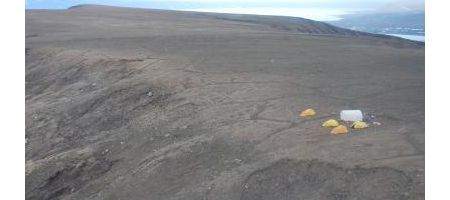Recently discovered ancient forests in Canada’s extreme north could be thriving again by 2100, new research indicates.

“According to the data model, climate conditions on Bylot Island will be able to support the kinds of trees we find in the fossilized forest that currently exist there, such as willow, pine and spruce,” says Alexandre Guertin-Pasquier of the University of Montreal.
“I’ve also found evidence of a possible growth of oak and hickory near the study site during this period. Although it would of course take time for a whole forest to regrow, the findings show that our grandchildren should be able to plant a tree and watch it grow.”
The fossilized forest found on Bylot Island in Nunavut is between 2.6 and three million years old, according to estimations based on the presence of extinct species and on paleomagnetic analyses.
“We studied the sediments in the forest and discovered pollen that are usually found in climates where the annual average temperature is around 0 degrees Celsius or 32 Fahrenheit,” says Guertin-Pasquier.
By comparison, current average conditions on Bylot Island are around 5°F. But global climate change, says Guertin-Pasquier, could bring this temperature up to one where such temperate forests could thrive.
“There is so much mystery that surrounds this forest – for example, how these trees managed to survive the relentless dark of the Arctic winter,” he says.
He says the next steps for this line of research will be to look more closely at other plant remains, in order to get a better understanding of the local flora.






